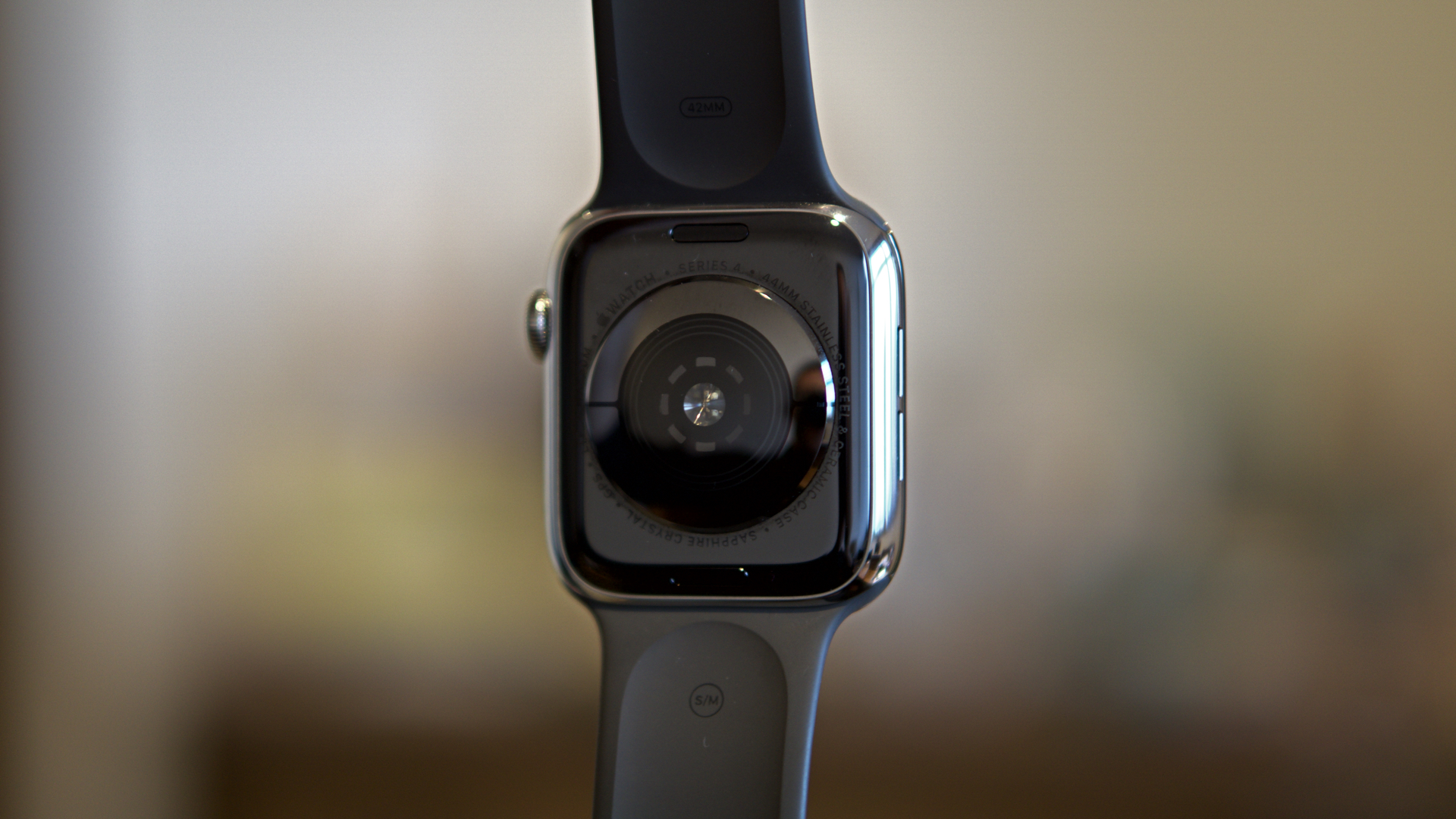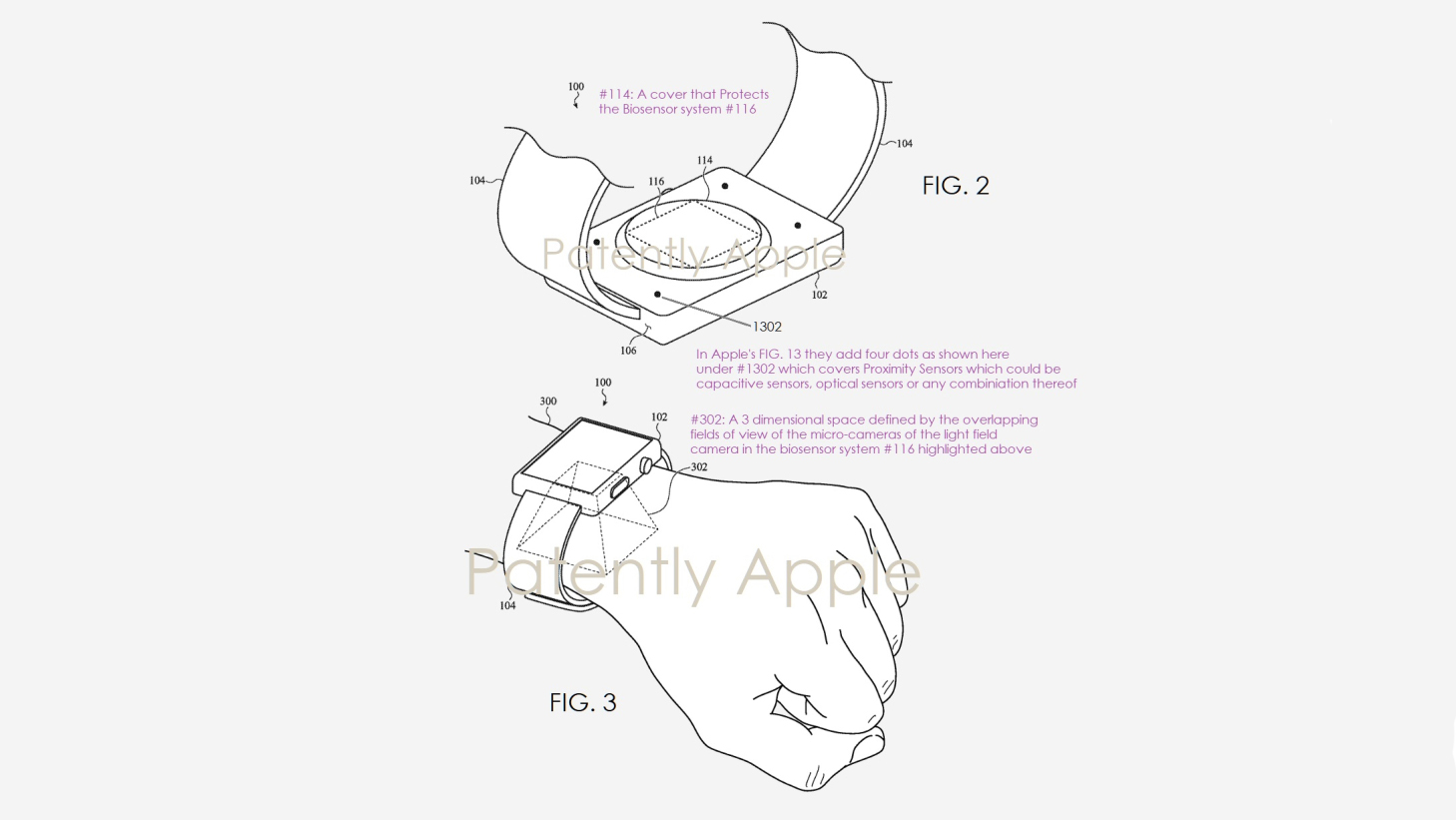

Apple Watch 5 – or the next Apple Watch after that – could feature a new security system which scans your wrist for patterns in your veins, bones, or pigmentation that are as unique as your fingerprint. The advanced bio-authentication, which is designed to work in conjunction with Face ID, was recently discovered by Patently Apple in, not surprisingly, a patent filing.
- The best smartwatch 2019: T3's guide to the best intelligent timepieces
- Best Apple Watch 2019: which model should you buy?
- Apple Watch Series 4 review: the best smartwatch takes a leap forward
According to said patent, the brand-new 'Wrist ID' system, as we have decided to call it, would see a light field camera installed at the bottom of the Apple Watch. This would construct an image of different layers of your wrist, recording a unique set of patterns.
The reference points could include hair follicles, a vascular pattern, a vein pattern, an artery pattern, a blood perfusion pattern in your skin, a blood perfusion pattern in your tendons,, a tendon pattern, a connective tissue pattern, a skin pigmentation pattern, a pore pattern, or a bone shape pattern.
These would be measured using a a bio-authentication enrolment process, similar to setting up Touch or Face ID.

The illustrations in the patent show that the biosensor system is mounted within the housing, as well as additional proximity sensors which would be required for the system to work.
The patent states, "the present technology can be configured to allow users to optionally bypass biometric authentication steps by providing secure information such as passwords, personal identification numbers (PINs), touch gestures, or other authentication methods, alone or in combination."
This could suggest that the system could be inaccurate or slow, as was the case with early fingerprint readers. Or PIN/password authentication could just be for backup in the event of an injury to your wrist that leaves you wearing a cast.
Sign up to the T3 newsletter for smarter living straight to your inbox
Get all the latest news, reviews, deals and buying guides on gorgeous tech, home and active products from the T3 experts
Interestingly, Apple always insisted that its fingerprint ID system would not work if you were dead, or someone amputated your finger in order to hack your iPhone. Sadly we were never able to test this. But while there is no specific word here on whether you need to be alive for Wrist ID to work, given the inclusion of a pulse meter and ECG on the Apple Watch, we assume this will be the case.
The patent application was originally filed in the third quarter of 2018 in the U.S. Patent Office. As ever with patents, it's entirely possible this will never see either the light of day, or the back of your wrist.

As the Style and Travel Editor at T3, Spencer covers everything from clothes to cars and watches to hotels. Everything that's cool, stylish, and interesting, basically. He's been a part of T3 for over seven years, and in that time covered every industry event known to man, from CES and MWC to the Geneva Motorshow and Baselworld. When he's driving up and down the country in search of the greatest driving roads, he can be found messing around on an electric scooter, playing with luxury watches, or testing the latest fragrances.

